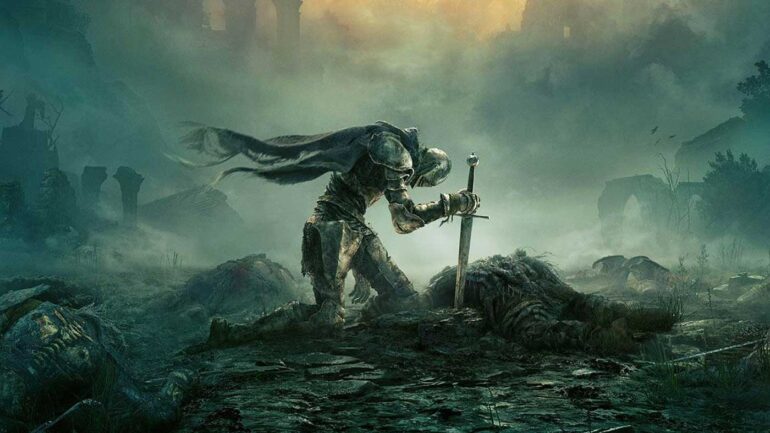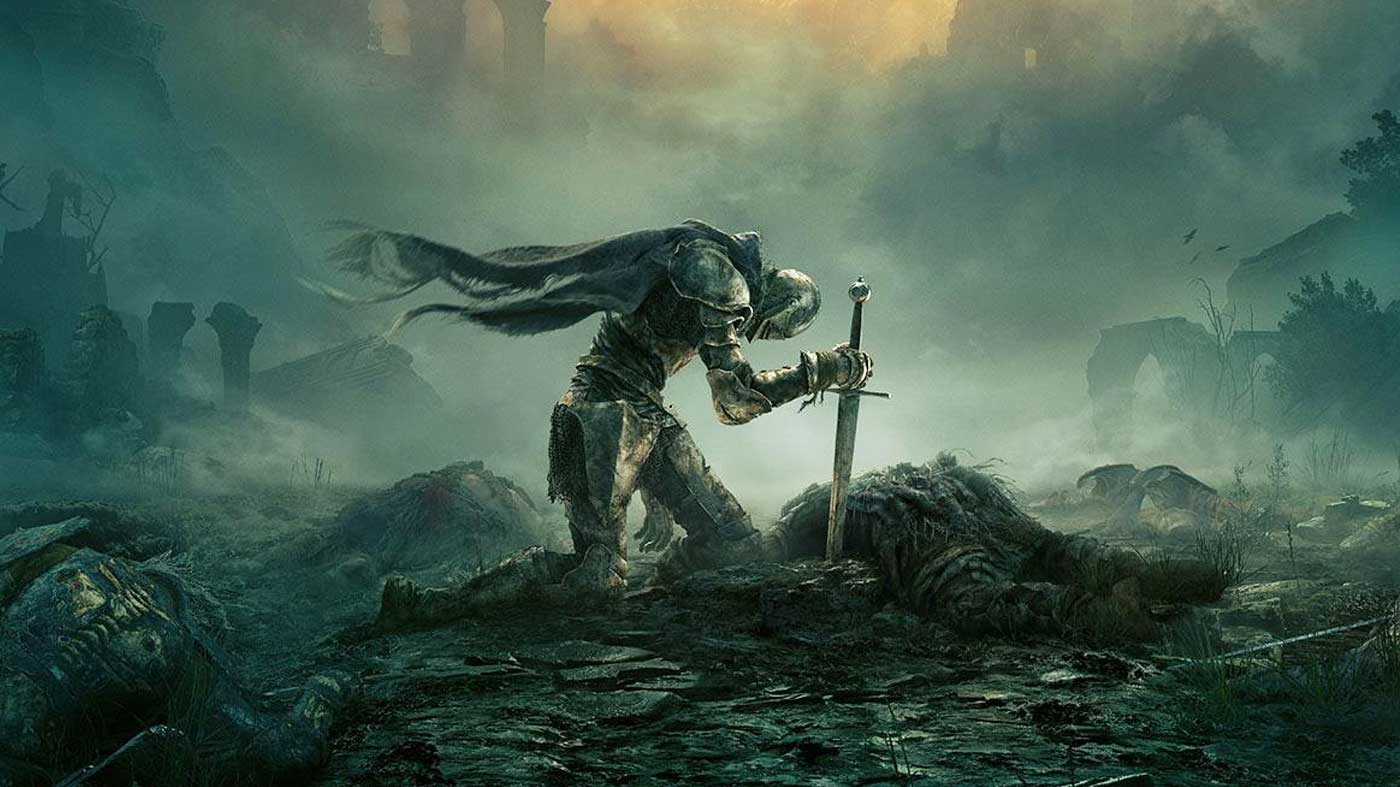Since the release of Demon’s Souls in 2009, FromSoftware’s titles have blown up from cult followings to some of the most pivotal cornerstones we have in the industry today, influencing hundreds of games, and even creating its own sub-genre in the process. There’s a palpable and emphatic excitement present in the lead up to the release of a new From game, and never has this consensus been more apparent than with Elden Ring. It some ways, Elden Ring is a celebration of all that came before – a culmination of everything people love about Dark Souls, Bloodborne, and Sekiro – while also elevating a well established formula to new heights with an open-world design philosophy similar to that of Breath of the Wild. The end result is one of From’s best experiences yet, positively dripping with creativity, attention to detail, and a sense of journey that will undoubtedly leave Elden Ring as one of the most talked about open-world games of this generation.
THE CHEAPEST COPY: $79 WITH FREE DELIVERY AT AMAZON
Elden Ring is set in The Lands Between, a once prosperous and peaceful land that has since been plunged into chaos and desolation after a war suitably dubbed: The Shattering. The Elden Ring, now broken into pieces is held by six demigods, each of them corrupted by the very power of their Great Runes. It falls to you as The Tarnished to journey across The Lands Between, and fell these once great heroes so that you can rebuild the Elden Ring, become the Elden Lord and restore order and harmony to The Lands Between. If it sounds similar to Dark Souls III, that’s because it is, but where Elden Ring differentiates itself is in its setting, world concept, and characters.

Elden Ring’s founding world concept is the brainchild of a collaborative effort between Hidetaka Miyazaki and George R. R. Martin. While I’m not too familiar with Martin’s work on Game of Thrones, it’s clear to me where he’s had an impact on the way this world has been built and on the rules that it abides by. This is still a FromSoftware experience through and through though, you’ll meet an eclectic cast of superbly written characters, each cemented firmly into the world by their backstories and motivations. Whether it be the joyous and jolly Alexander, a sentient warrior pot, or the ever enigmatic Patches, there’s a little something here for everyone to gravitate towards. Likewise, the environmental storytelling on display here is as good as it’s always been, and every landscape effortlessly paints a picture of what we once was. No where is this sense of world and place more apparent than when exploring one of the many regions of The Lands Between.
Where Elden Ring separates itself the most from its predecessors, is in its structure and the way you progress through its world. After a short tutorial area, you’re dropped into Limgrave, a vertically varied landscape of lush greenery, and ruins, all of it punctuated by the mighty Stormveil Castle towering overhead. From this point, you’re free to explore to your heart’s content, with only the Sites of Grace – the new Bonfires – to nudge you in the right direction via an indicator on the map. While it’s easy to get lost exploring and sidetracked by all the optional content you can engage with, Elden Ring’s open world is at its best when you’re stumbling across things, spotting structures in the distance and thinking “What’s that?”, only to be rewarded with something upon further investigation.
These optional objectives can range from small-scale dungeons and enemy patrols, to overworld boss fights and new Sites of Grace to expand your fast travel options. Each region is densely packed with things to do, and none of them feel like bloat or wasted space, not once did I ever feel like I had to engage with them to progress the main quest. What’s more telling, perhaps, is the fact that I had to rip myself away from Limgrave to move onto the next area – a testament to the quality of these optional activities.
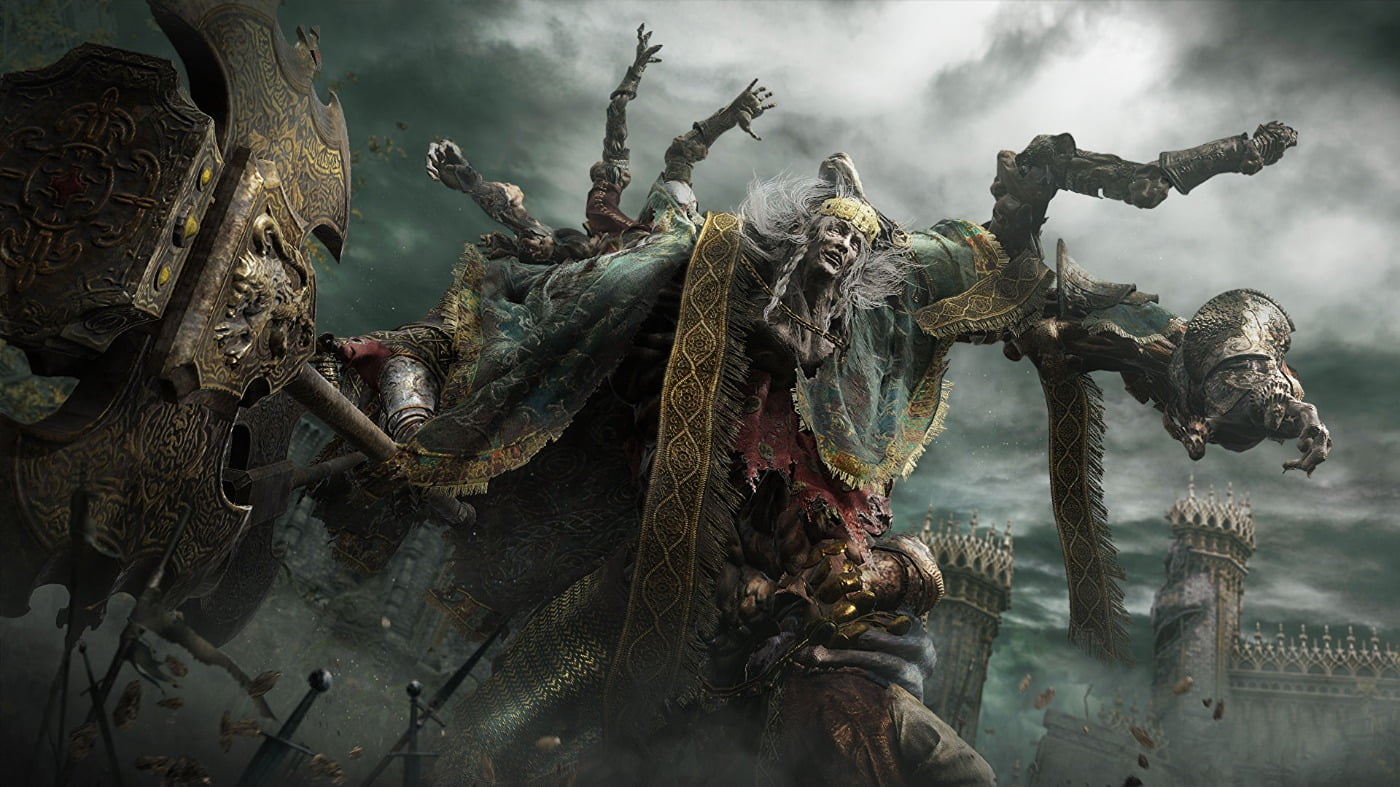
While you can fast travel to the different Sites of Grace you’ve unlocked across The Lands Between, your main means of exploration is via your spectral horse, Torrent. After progressing through the early areas of Limgrave, you’ll be given an item that allows you to summon Torrent at the press of a button. While mounted, you can double jump and make use of geysers to propel yourself up into the sky, making traversal that little bit more seamless. You can also engage in horseback combat, which more often than not feels clunky and lacks the impact of regular combat. Fortunately, the situations that require you to use Torrent to gain an advantage are far outweighed by those that don’t, but it’s still an awkward blemish on an otherwise polished combat system.
As you’re exploring a region for the first time, you’re almost always slowly moving towards that area’s Legacy Dungeon, an intricately designed exploration area that retains From’s expert level design that intertwines its own pathways and loops back on itself in unexpected ways. A special mention should go out to The Academy of Raya Lucaria, in the second area, Liurnia of the Lakes. Without spoiling too much, it’s a school ravaged by its knowledge-maddened alumni, with a thick fog that envelopes every aspect of its outside environments. It’s a dungeon that screams Bloodborne in its concept and design, and it’s a true wonder to explore as you ascend it’s gilded halls. All of these Legacy Dungeons are bolstered by some of From’s best boss fights yet, that will test your skills, and always seem to up the ante as you move forward, providing a challenging yet satisfying difficulty curve. Some are previous concepts taken further, classic one on ones, or wholly new ideas, and a vast majority of them – especially the end game ones – are thrilling to surmount.
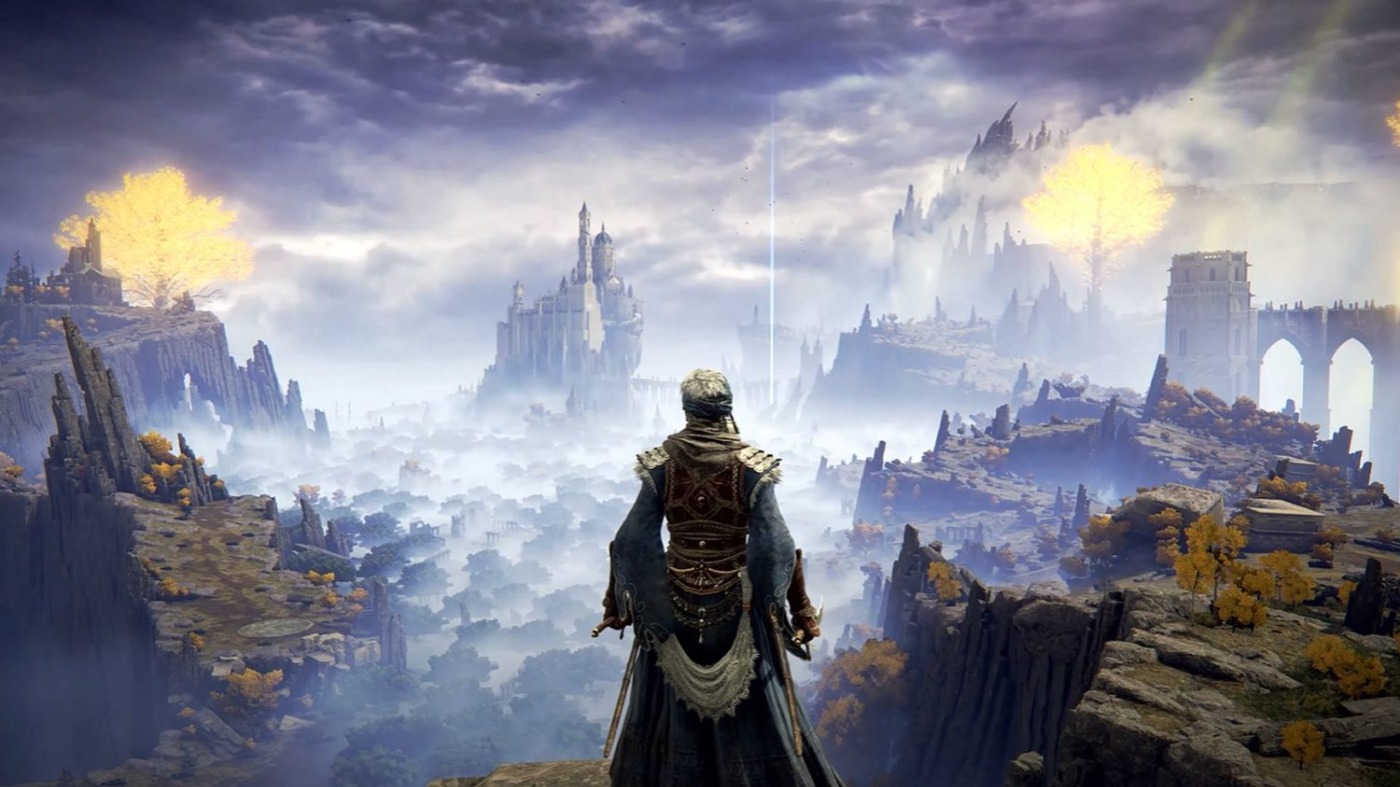
Now for the elephant in the room – difficulty. While I wouldn’t say Elden Ring is the hardest of FromSoftware’s world renowned challenges, it definitely isn’t the easiest either. It is however, the most accessible. It’s clear that there’s a concerted effort here to explain systems and mechanics to newer players who mightn’t have much experience with other titles of this Ilk. Similarly, the non-linear design means that if you get truly stuck on a particular boss, you can leave, level up your character, upgrade your weapons, increase your Flask charges, and come back more powerful than before. There’s also the inclusion of Stakes of Marika, which will typically spawn you closer to your death location, making the inevitable trips back to the boss room relatively painless. Still though, this won’t trivialize encounters, so if you haven’t been one for smashing your head against a brick wall until the cracks start showing, Elden Ring won’t be the FromSoftware game to change that.
Then we get to the RPG elements present in Elden Ring, and they mostly behave how they have in past games. You’ll start out by creating your character with From’s most extensive customizer yet, and you’ll be prompted to pick a background for your base stats. While this doesn’t necessarily reflect what your build will look like by the end of the game, it sets a trajectory for what to focus on in the early game. Whether it be a full strength build with focus on wielding colossal great-swords and hammers, or a combined dexterity magic build that allows you to weave sorceries into your combat flow, there’s a lot to pick and choose from in Elden Ring.
The Weapon Arts system from Dark Souls III has also been reworked into Ashes of War. Each weapon comes with its own intrinsic Ashes of War, which behaves the same as Weapon Arts – powerful attacks or buffs at the cost of FP. The major improvement in this system, though, is that Ashes of War can be assigned to different weapons, as long as the archetype matches. Certain Ashes of War will also let you assign elemental affinities to your weapons, further deepening customization and build crafting. It’s a brilliantly free-flowing system that allows for deeper player choice, and creates a more meaningful bond with your weapons.
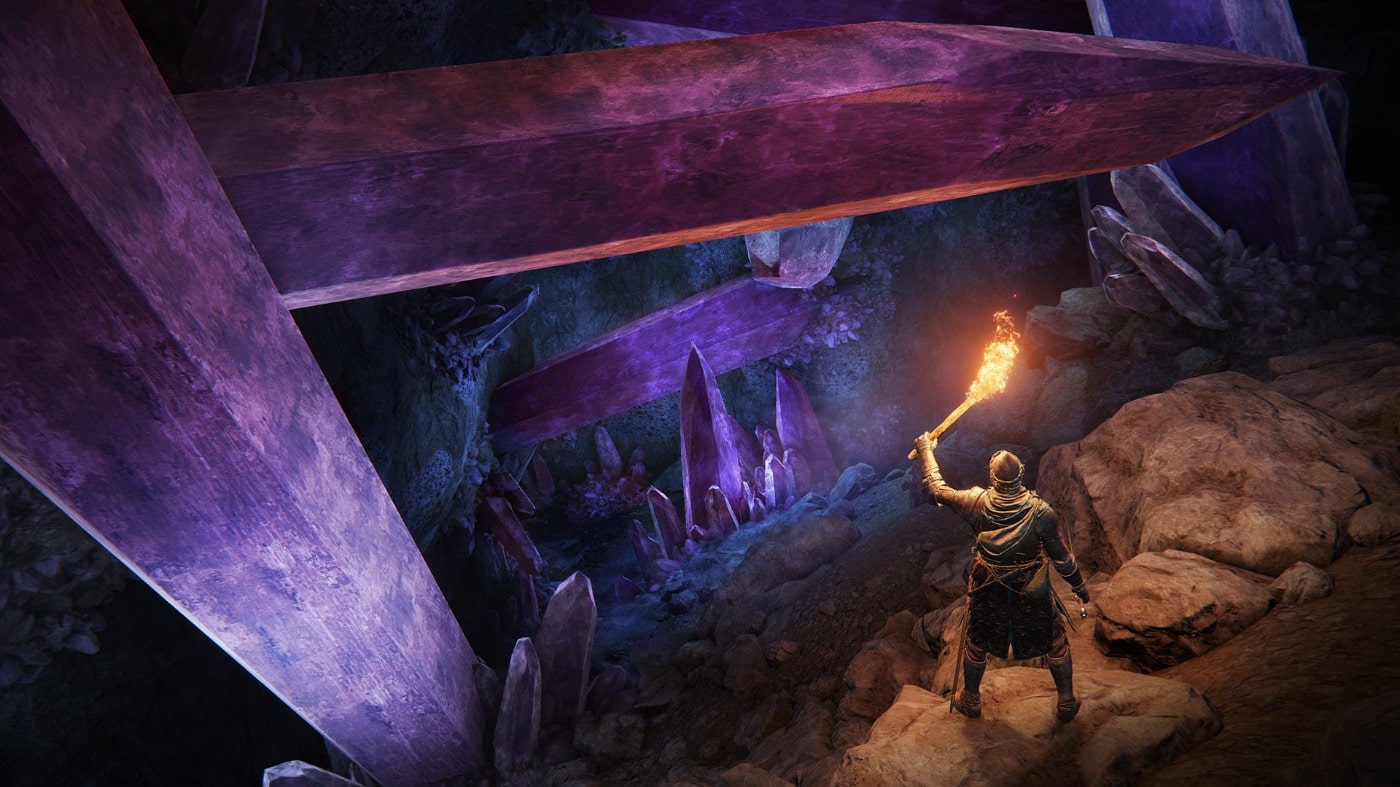
As if that wasn’t enough to begin with, Elden Ring also introduces Rune Arcs and Spirit Summoning. The latter allows you to summon AI spirits to fight with you during boss fights at the cost of FP, and these spirits can also be upgraded to bolster their HP and damage output. There’s all kinds of spirits with different strengths, so you’ll often have a suite you pick and choose from depending on the occasion. Rune Arcs are most comparable to Embers or Human Effigies from past games, but are far more rare, and introduce an interesting risk/reward system in the way they’re implemented. Every time you defeat the demigod of any given region, you’ll receive their Great Rune, which can be activated at a Divine Tower in their area.
You can only have one Great Rune equipped at any given time, and their bonuses are only active when a Rune Arc is used. These aren’t small bonuses. The first Great Rune, for example, boosts all of your attributes, effectively increasing your character’s level by 40 until your next death. Due to how rare Rune Arcs are, there’s a lot of deliberation to be had in regards to when you use these so you don’t waste them. The boost they provide might be all you need to bring that boss down, but make one mistake, and it’s gone. This system is less of a necessity and more of a bonus buff to use sparingly, but its inclusion is welcome nonetheless.
Lastly, there’s the return of player summoning, and invasions. PVP diehards will be glad to here that the addition of anti-cheat software on the PC version should hopefully result in less compromises. On the co-operative side, things are a bit mixed. While it all works good, players can only be summoned from Summoning Pools, pre-determined spots on the map that define the explorable area when a co-op session is active. All of the dungeons are fully playable in co-op, but if you were hoping to explore the overworld with friends in limitless fashion, you might find that the implementation here is restrictive. While I can understand trying to retain the somber and isolating experience of exploring The Lands Between by yourself, I can’t help but wonder what a more freeing and open co-op experience would’ve brought to the table.
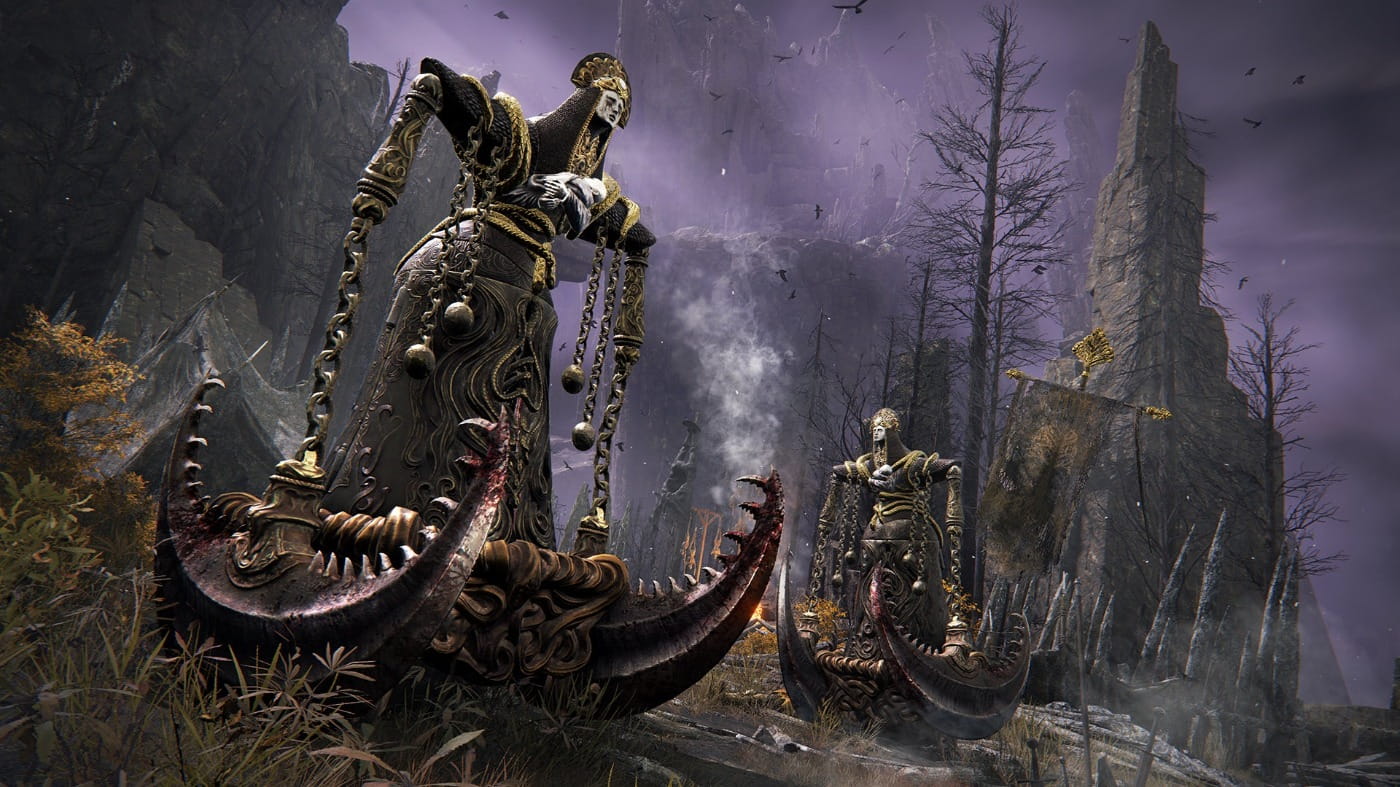
I played Elden Ring on PC, and across the almost 60 hours I spent with it, I’m pleased to report that it’s a mostly polished experience. It’s goes without saying that this game is absolutely gorgeous, maybe not to the same capacity as another big triple A title to come out this month, but still had my jaw on the floor with some sweeping vistas and landscapes to take in at every turn. I’ve already spoken about how excellent I think Liurnia of the Lakes is, but that shouldn’t taken away from the crimson covered lands of Caelid or the golden sky perpetually hanging over the top of Altus Plateau. I did experience a few hiccups on PC, though, namely some stuttering and a couple crashes due to the anti-cheat software. I’m sure this will be ironed out by launch, though, and at the end of the day they were minor stumbles in a broadly polished experience, which is impressive considering how large the game world is.
THE PS5 EXPERIENCE
Whilst the majority of our time with Elden Ring was spent on PC, we did get to also play the game on PS5. There’s two modes, one that prioritizes framerate and one that prioritizes quality. As you’d expect, the framerate mode is closer to 60FPS whilst quality mode maxes out at 30FPS. Both see drops in frames, but you’ll absolutely want to go with the framerate mode to provide the most stable performance as possible. There was a noticeable amount of pop-in with the world loading in as you look around occasionally, but on the whole it is a stable experience and does not detract from the fantastic experience that Elden Ring is.


